Abstract
Peak expiratory flow rate (PEFR) has been measured hourly from waking to sleeping in 29 workers with respiratory symptoms exposed to the fumes of soft soldering fluxes containing colophony (pine resin). Thirty-nine records of mean length 33 days have been analysed, and the results compared with the occupational history and bronchial provocation testing in the same workers. From plots of daily mean, maximum, and minimum PEFR, recurring physiological patterns of asthma emerge. The most common pattern is for asthma to increase with each successive working day. Some workers have an equivalent deterioration each working day. Regular recovery patterns taking one, two, and three days are described. The combination of a three-day recovery pattern and a late asthmatic reaction on Monday results in Monday being the best day of each week. Assessment of these records has shown them to be specific and sensitive, provided the worker was not taking corticosteroids or sodium cromoglycate during the period of the record and that bronchodilator usage was kept constant on days at home and at work. The results of the PEFR records correlate well with bronchial provocation testing, and provide a suitable alternative to this for the diagnosis of mild to moderate occupational asthma. The records are of particular use for screening symptomatic workers whose symptoms appear unlikely to be related to work.
Full text
PDF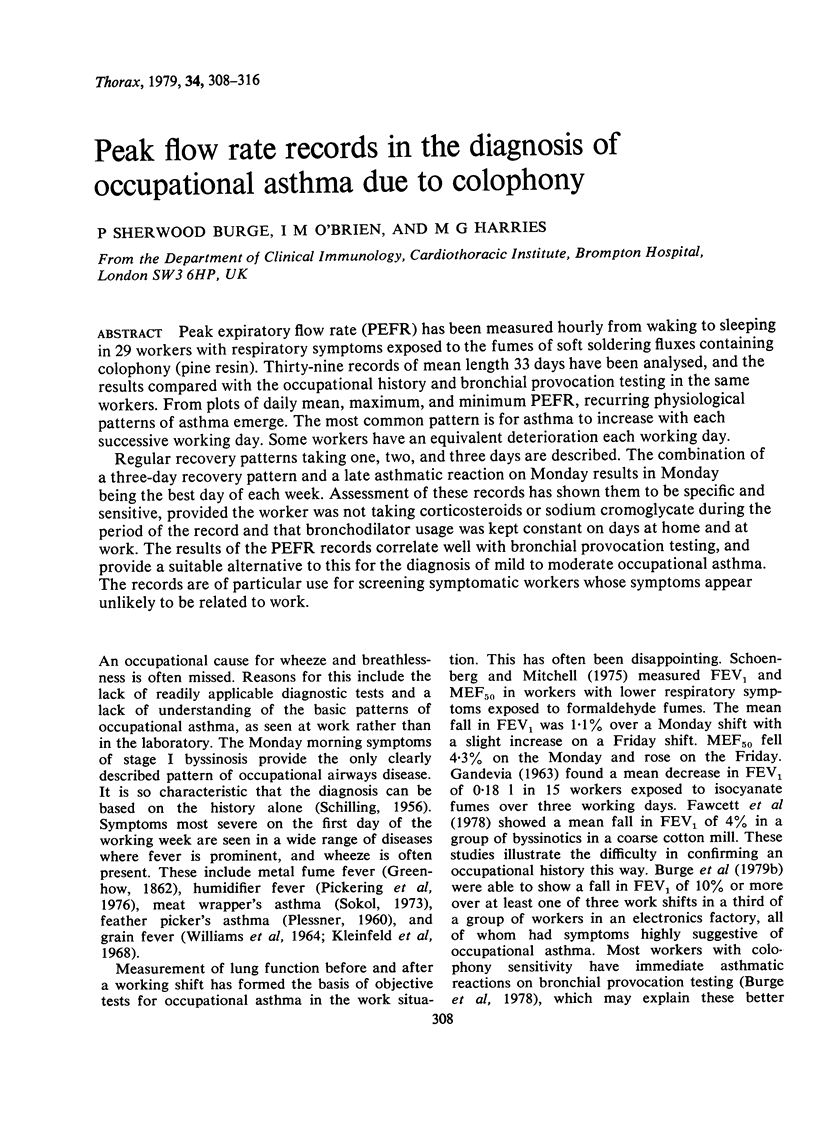
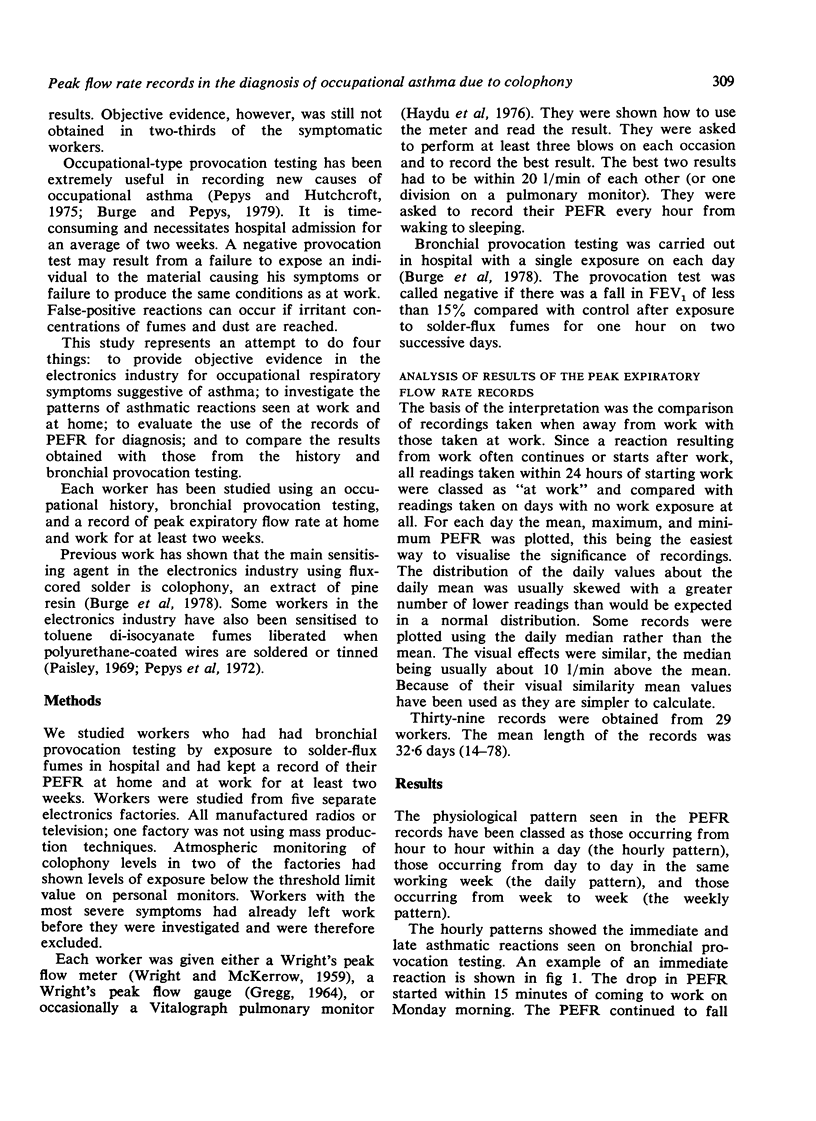
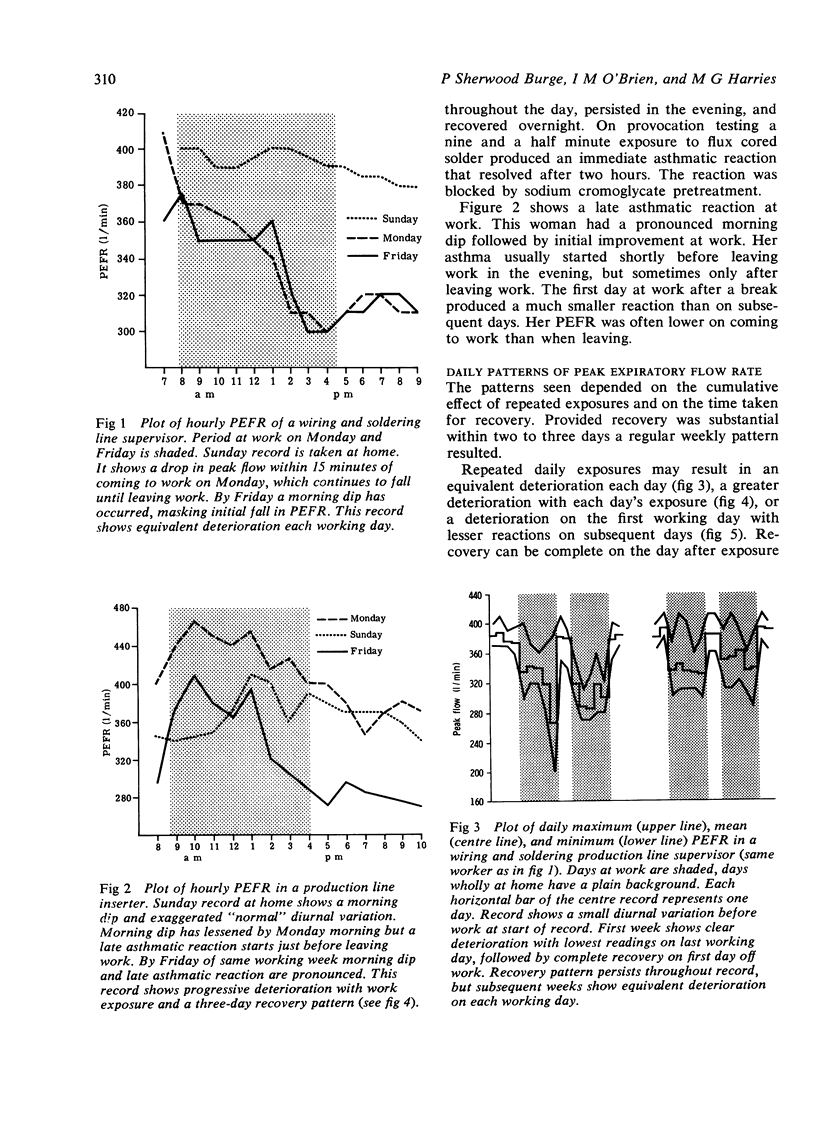
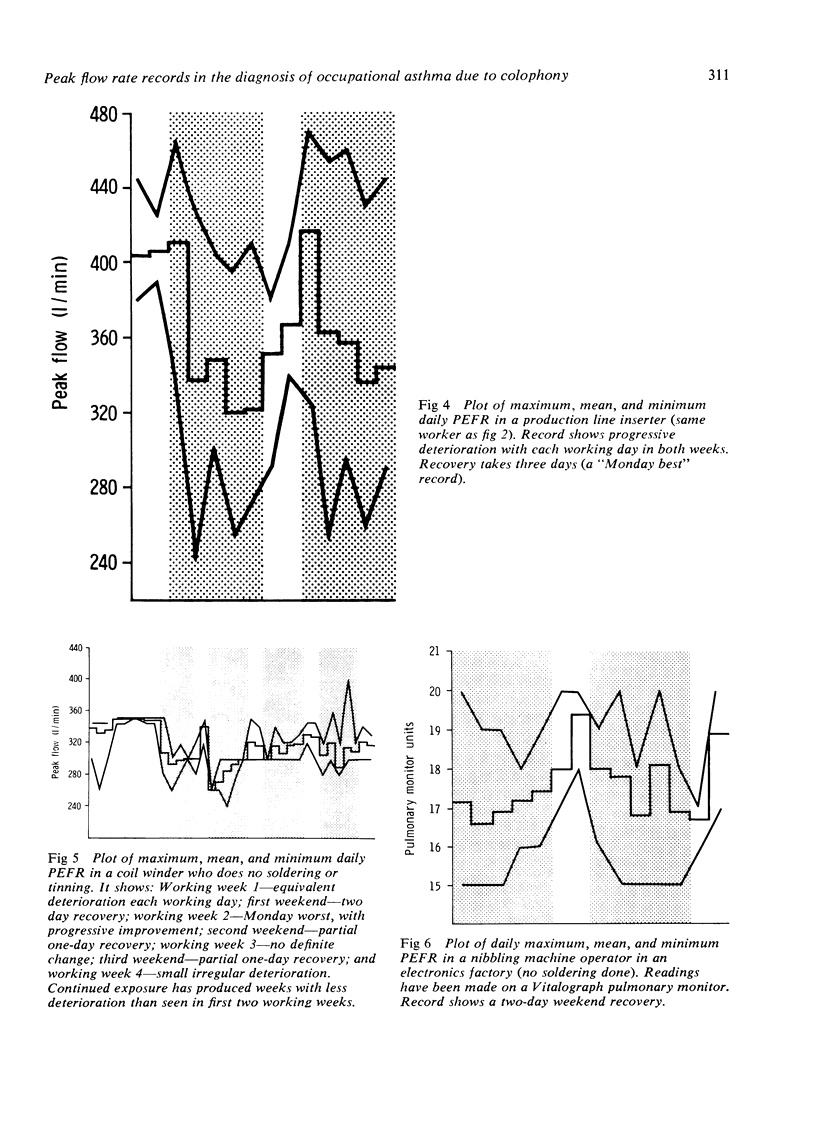
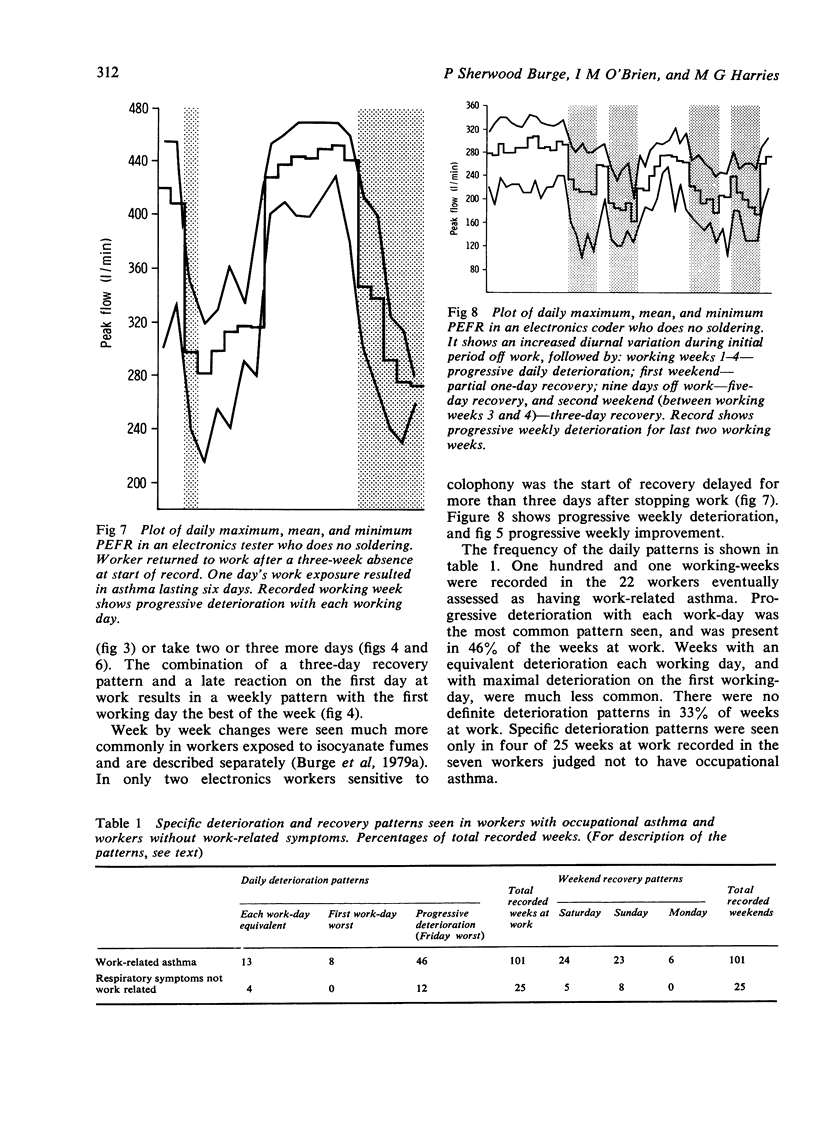
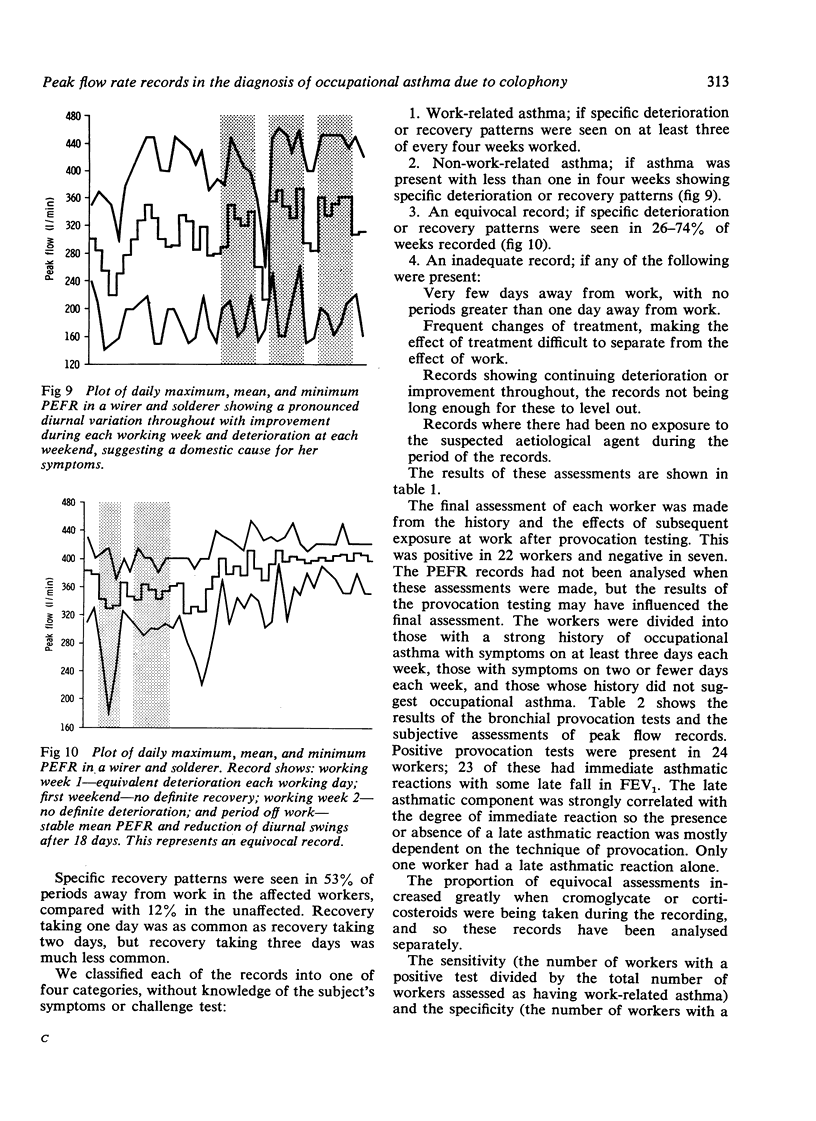
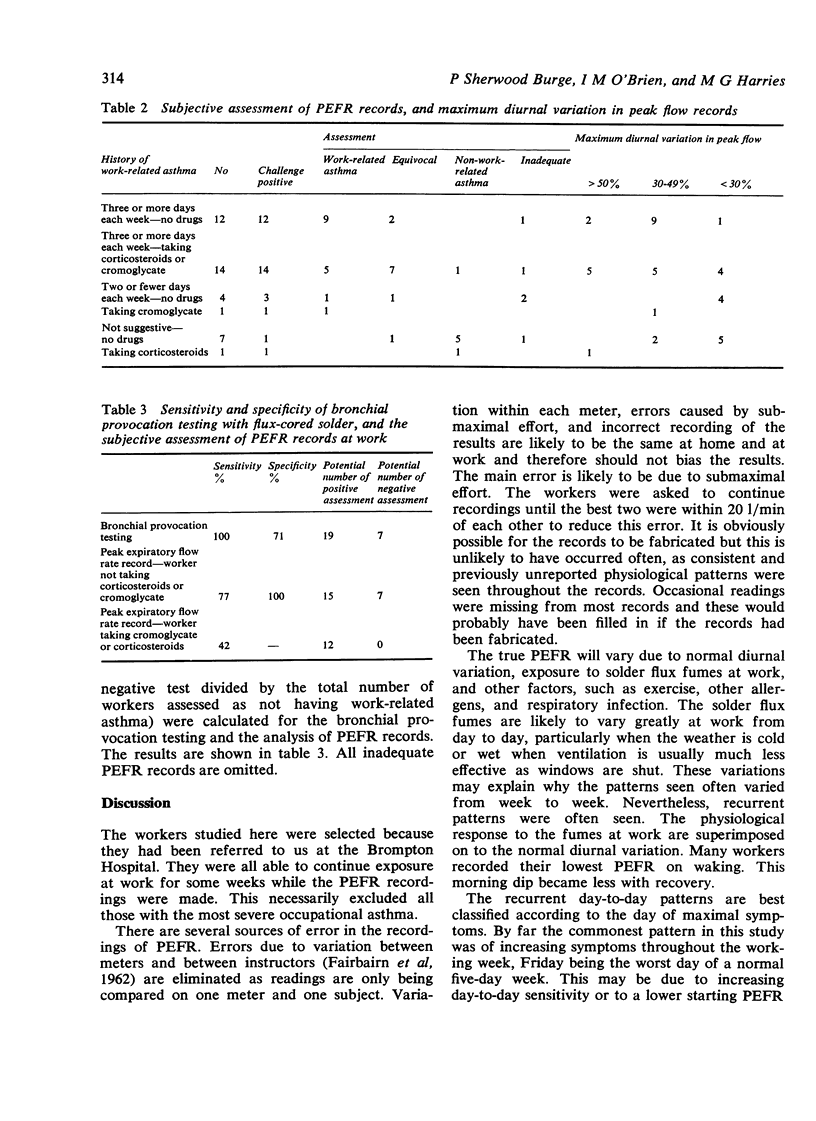
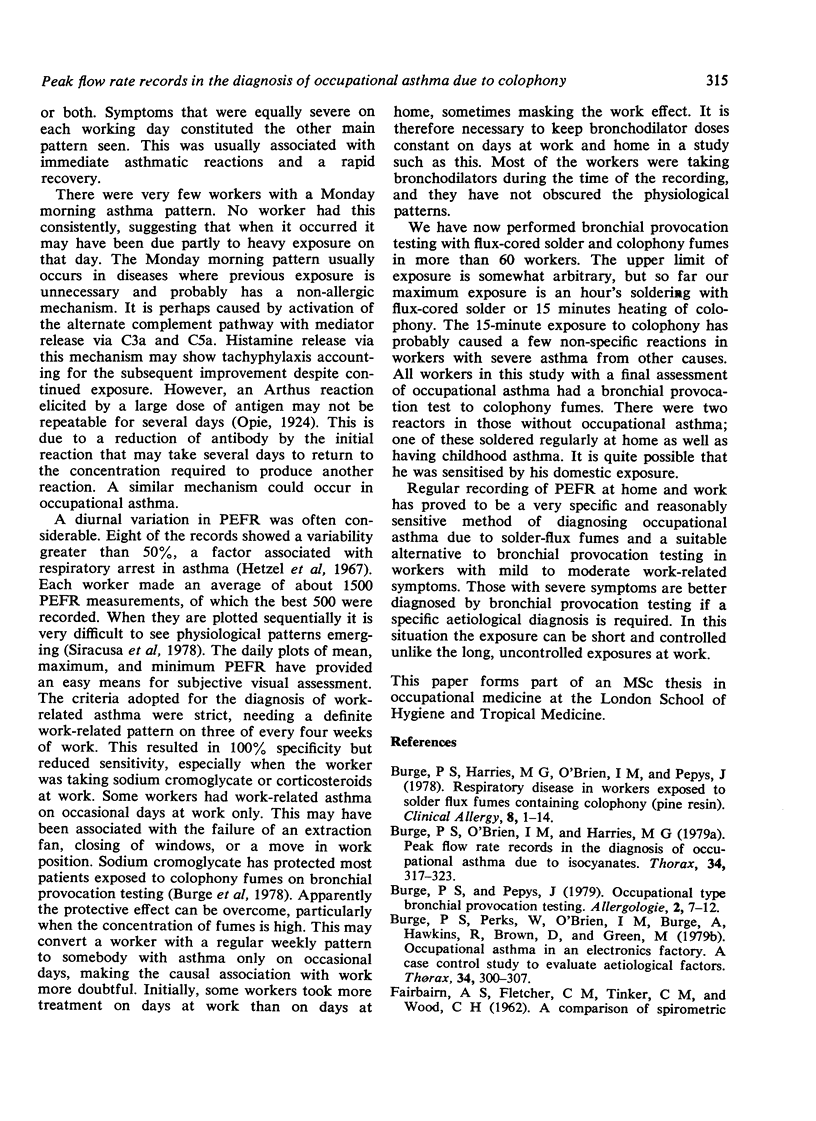
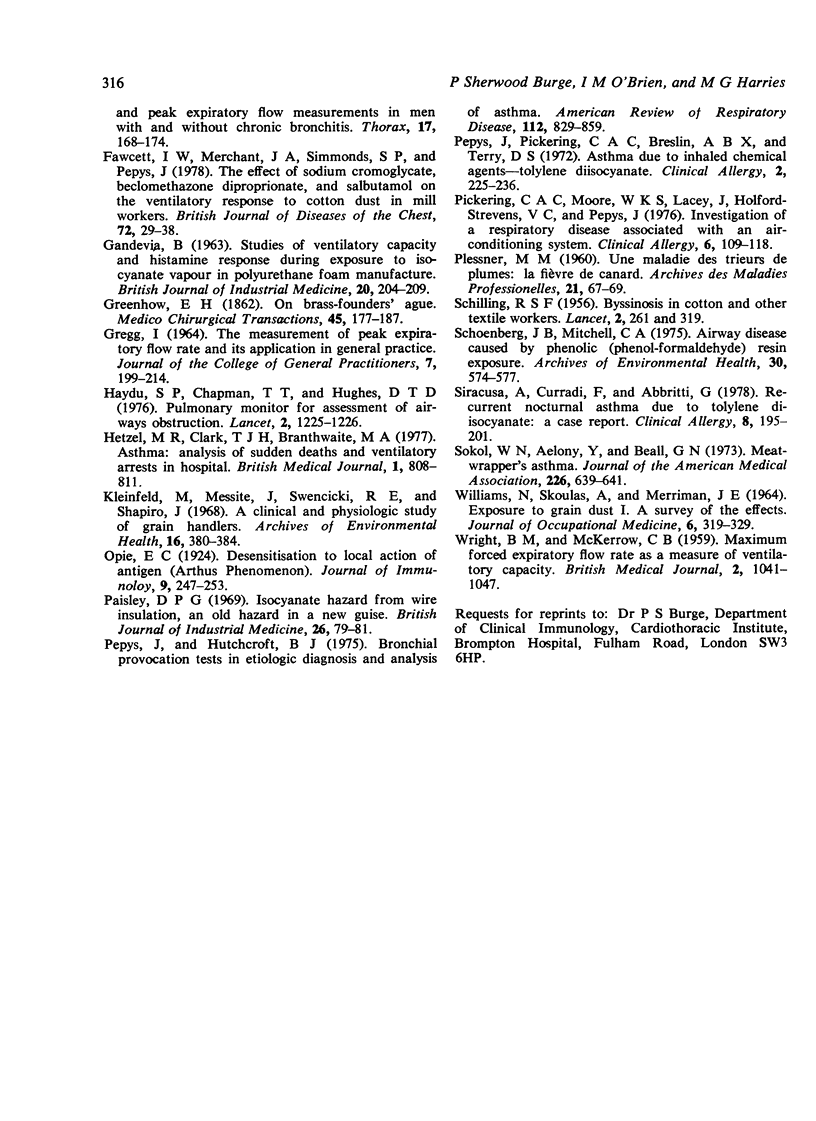
Selected References
These references are in PubMed. This may not be the complete list of references from this article.
- Burge P. S., Harries M. G., O'Brien I. M., Pepys J. Respiratory disease in workers exposed to solder flux fumes containing colophony (pine resin). Clin Allergy. 1978 Jan;8(1):1–14. doi: 10.1111/j.1365-2222.1978.tb00441.x. [DOI] [PubMed] [Google Scholar]
- Burge P. S., O'Brien I. M., Harries M. G. Peak flow rate records in the diagnosis of occupational asthma due to isocyanates. Thorax. 1979 Jun;34(3):317–323. doi: 10.1136/thx.34.3.317. [DOI] [PMC free article] [PubMed] [Google Scholar]
- Burge P. S., Perks W. H., O'Brien I. M., Burge A., Hawkins R., Brown D., Green M. Occupational asthma in an electronics factory: a case control study to evaluate aetiological factors. Thorax. 1979 Jun;34(3):300–307. doi: 10.1136/thx.34.3.300. [DOI] [PMC free article] [PubMed] [Google Scholar]
- FAIRBAIRN A. S., FLETCHER C. M., TINKER C. M., WOOD C. H. A comparison of spirometric and peak expiratory flow measurements in men with and without chronic bronchitis. Thorax. 1962 Jun;17:168–174. doi: 10.1136/thx.17.2.168. [DOI] [PMC free article] [PubMed] [Google Scholar]
- Fawcett I. W., Merchant J. A., Simmonds S. P., Pepys J. The effect of sodium cromoglycate, beclomethasone diproprionate and salbutamol on the ventilatory response to cotton dust in mill workers. Br J Dis Chest. 1978 Jan;72(1):29–38. doi: 10.1016/0007-0971(78)90005-0. [DOI] [PubMed] [Google Scholar]
- GANDEVIA B. STUDIES OF VENTILATORY CAPACITY AND HISTAMINE RESPONSE DURING EXPOSURE TO ISOCYANATE VAPOUR IN POLYURETHANE FOAM MANUFACTURE. Br J Ind Med. 1963 Jul;20:204–209. doi: 10.1136/oem.20.3.204. [DOI] [PMC free article] [PubMed] [Google Scholar]
- GREGG I. THE MEASUREMENT OF PEAK EXPIRATORY FLOW RATE AND ITS APPLICATION IN GENERAL PRACTICE. J Coll Gen Pract. 1964 Mar;7:199–214. [PMC free article] [PubMed] [Google Scholar]
- Haydu S. P., Chapman T. T., Hughes D. T. Pulmonary monitor for assessment of airways obstruction. Lancet. 1976 Dec 4;2(7997):1225–1225. doi: 10.1016/s0140-6736(76)91147-8. [DOI] [PubMed] [Google Scholar]
- Hetzel M. R., Clark T. J., Branthwaite M. A. Asthma: analysis of sudden deaths and ventilatory arrests in hospital. Br Med J. 1977 Mar 26;1(6064):808–811. doi: 10.1136/bmj.1.6064.808. [DOI] [PMC free article] [PubMed] [Google Scholar]
- Kleinfeld M., Messite J., Swencicki R. E., Shapiro J. A clinical and physiologic study of grain handlers. Arch Environ Health. 1968 Mar;16(3):380–384. doi: 10.1080/00039896.1968.10665074. [DOI] [PubMed] [Google Scholar]
- PLESSNER M. [A disease of feather sorters: duck fever]. Arch Mal Prof. 1960 Jan-Feb;21:67–69. [PubMed] [Google Scholar]
- Paisley D. P. Isocyanate hazard from wire insulation: an old hazard in a new guise. Br J Ind Med. 1969 Jan;26(1):79–81. doi: 10.1136/oem.26.1.79. [DOI] [PMC free article] [PubMed] [Google Scholar]
- Pepys J., Hutchcroft B. J. Bronchial provocation tests in etiologic diagnosis and analysis of asthma. Am Rev Respir Dis. 1975 Dec;112(6):829–859. doi: 10.1164/arrd.1975.112.6.829. [DOI] [PubMed] [Google Scholar]
- Pepys J., Pickering C. A., Breslin A. B., Terry D. J. Asthma due to inhaled chemical agents, tolylene di-isocyanate. Clin Allergy. 1972 Sep;2(3):225–236. doi: 10.1111/j.1365-2222.1972.tb01287.x. [DOI] [PubMed] [Google Scholar]
- Pickering C. A., Moore W. K., Lacey J., Holford-Strevens V., Pepys J. Investigation of a respiratory disease associated with an air-conditioning system. Clin Allergy. 1976 Mar;6(2):109–118. doi: 10.1111/j.1365-2222.1976.tb01888.x. [DOI] [PubMed] [Google Scholar]
- SCHILLING R. S. Byssinosis in cotton and other textile workers. Lancet. 1956 Aug 18;271(6938):319–concl. doi: 10.1016/s0140-6736(56)92187-0. [DOI] [PubMed] [Google Scholar]
- Schoenberg J. B., Mitchell C. A. Airway disease caused by phenolic (phenol-formaldehyde) resin exposure. Arch Environ Health. 1975 Dec;30(12):574–577. doi: 10.1080/00039896.1975.10666782. [DOI] [PubMed] [Google Scholar]
- Siracusa A., Curradi F., Abbritti G. Recurrent nocturnal asthma due to tolylene di-isocyanate: a case report. Clin Allergy. 1978 Mar;8(2):195–201. doi: 10.1111/j.1365-2222.1978.tb00464.x. [DOI] [PubMed] [Google Scholar]
- Sokol W. N., Aelony Y., Beall G. N. Meat-wrapper's asthma. A new syndrome? JAMA. 1973 Nov 5;226(6):639–641. [PubMed] [Google Scholar]
- WILLIAMS N., SKOULAS A., MERRIMAN J. E. EXPOSURE TO GRAIN DUST. I. A SURVEY OF THE EFFECTS. J Occup Med. 1964 Aug;6:319–329. [PubMed] [Google Scholar]
- WRIGHT B. M., McKERROW C. B. Maximum forced expiratory flow rate as a measure of ventilatory capacity: with a description of a new portable instrument for measuring it. Br Med J. 1959 Nov 21;2(5159):1041–1046. doi: 10.1136/bmj.2.5159.1041. [DOI] [PMC free article] [PubMed] [Google Scholar]


